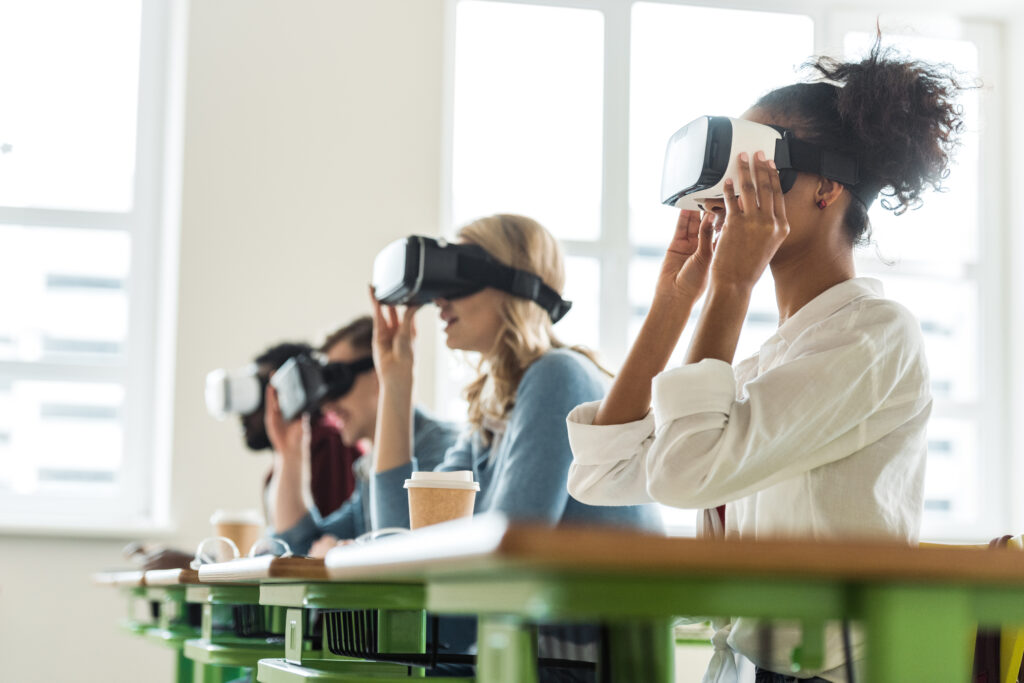Learning models in the education sector have almost always been subject to change, with educators committed to continually improving learning outcomes with support from modern technologies. In recent years, due in part to the global pandemic, digital transformation in classrooms across the globe has ramped up in a significant manner.
In 2020 alone, educators witnessed an almost 33% increase in the use of digital education platforms across the globe, with 80% of all US colleges now awarding credentials for online learning programs. Alongside these developments, innovations in AI, machine learning and virtual reality technologies have contributed to a new wave of intelligent education solutions.
To better understand the current and potential future impact of digital transformation in the education sector and how it may affect our kids, let’s look at five important innovations in education technology.
1. E-learning
E-learning is defined as any way to conduct education programs using electronic media, with lessons typically involving some degree of remote-learning conducted via the internet. While many may assume that e-learning models have only gained prominence in response to the global pandemic, data reveals 63% of US high schools utilized e-learning tools daily in 2019.
E-learning presents educators the ability to reduce knowledge gaps by making key learning resources more accessible to students, both in and out of traditional teaching environments. Online lessons can be played back at any time, collaborative projects can be worked on remotely and students can approach lessons at a pace more fitting to unique learning styles.
2. Cloud computing
In a similar sense to e-learning initiatives, the rise of cloud computing systems in educational facilities has enabled students to access and utilize learning resources much more efficiently. With educators able to store and manage vast amounts of educational information in remote accessible cloud systems, students gain more freedom to access key resources at any time.
However, the primary benefit of cloud computing in schools involves the reduced costs and increased flexibility gifted by cloud platforms when compared to more traditional on-premises servers. Upfront development costs are typically lower, systems are more easily scaled and teachers can freely monitor operations remotely to continuously improve learning programs.
3. Artificial intelligence
The adoption of AI technologies in the education sector has increased significantly in recent years, with 50% of all US-based higher education institutions now utilizing some form of AI systems to supplement existing processes. The main draw of this technology being its ability to reduce the administrative burden shouldered by staff via the automation of essential tasks.
Once time-consuming tasks like attendance and occupancy tracking can now be automated, providing staff more time to focus on learning programs. Additionally, AI analytics software is used to strengthen building management and security systems, with institutions able to apply to school safety funding for the development of smart security systems to improve safety.
4. Virtual reality
Modern virtual reality technology has the ability to transform traditional learning programs by enabling students to interact with educational resources in a much more engaging way. Staff can take students on virtual field trips to previously inaccessible environments, working to develop interactive and immersive learning experiences tailored to different learning styles.
By extending the reach of older learning programs to capture students’ imaginations through sensory experiences, educators could dramatically improve both the efficacy and efficiency of programs with traditionally low engagement metrics. Recent data even suggests that VR learners may absorb key information up to 300% faster than in ordinary classroom settings.

5. Gamification
In a similar sense to virtual reality learning tools, gamified learning is becoming increasingly popular among educators in an attempt to improve engagement in the classroom. Using VR and augmented reality technologies, teachers can appeal to the competitive nature of their students in a safe and structured manner, applying gamified rules and goals to their lessons.
Virtual environments can be created in which students can work independently or as a team to achieve predetermined goals, earning rewards for the completion of certain tasks. This interactive approach to learning has proved successful in a number of studies, with one such study revealing 67% of students believe gamification helps to improve motivation in learning.
Summary
Modern innovations in education technology continue to improve key metrics like efficiency, productivity and engagement across learning environments, helping students from almost all backgrounds focus on learning styles best suited to their abilities. With easy access to core resources, interactive learning tools and actionable data, learning modules can be optimized.
Given the measurable improvements that current innovations like e-learning, virtual reality, artificial intelligence, cloud computing and gamification have already brought to traditional learning environments, the future of education technology looks bright for students and staff.







Leave a Reply